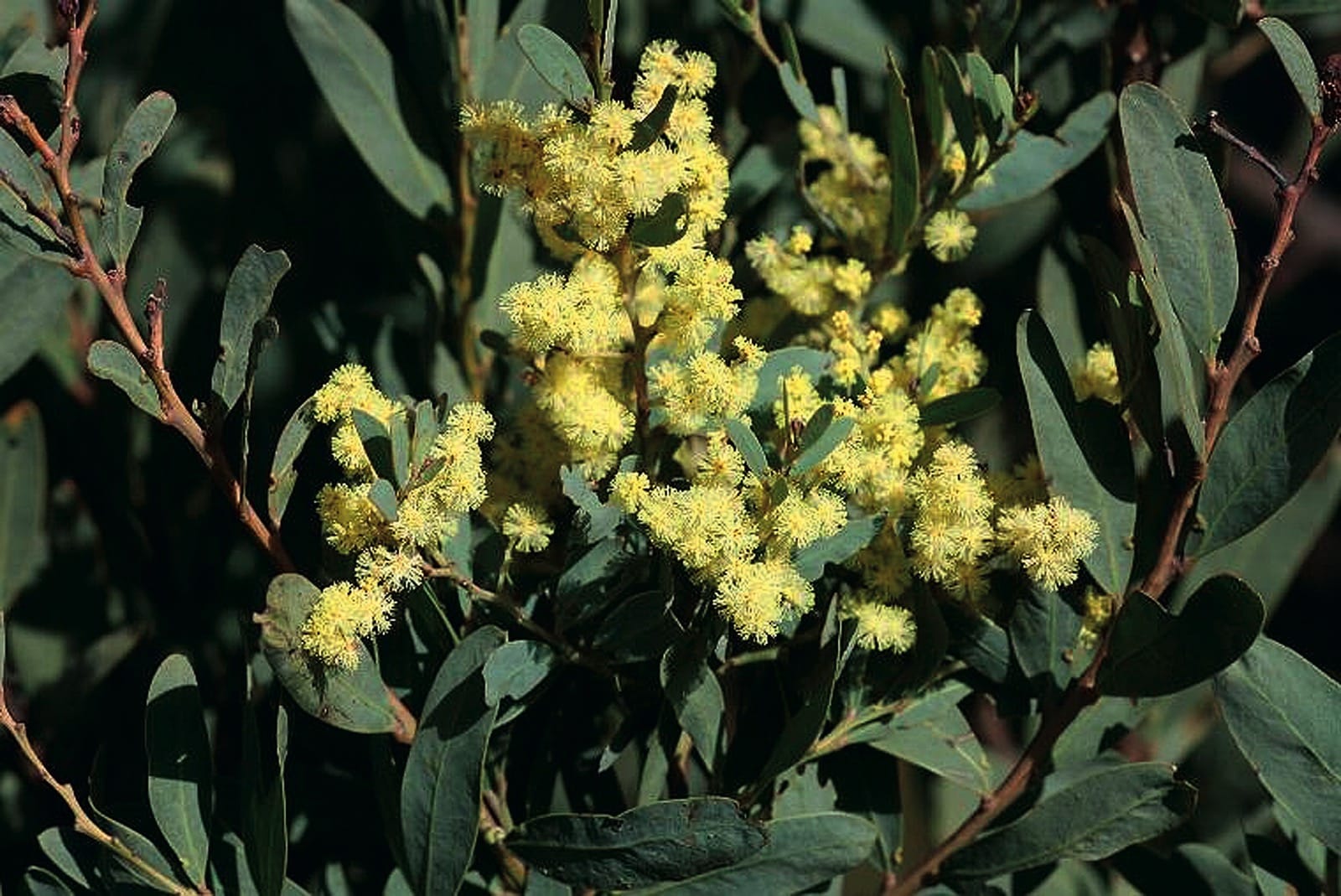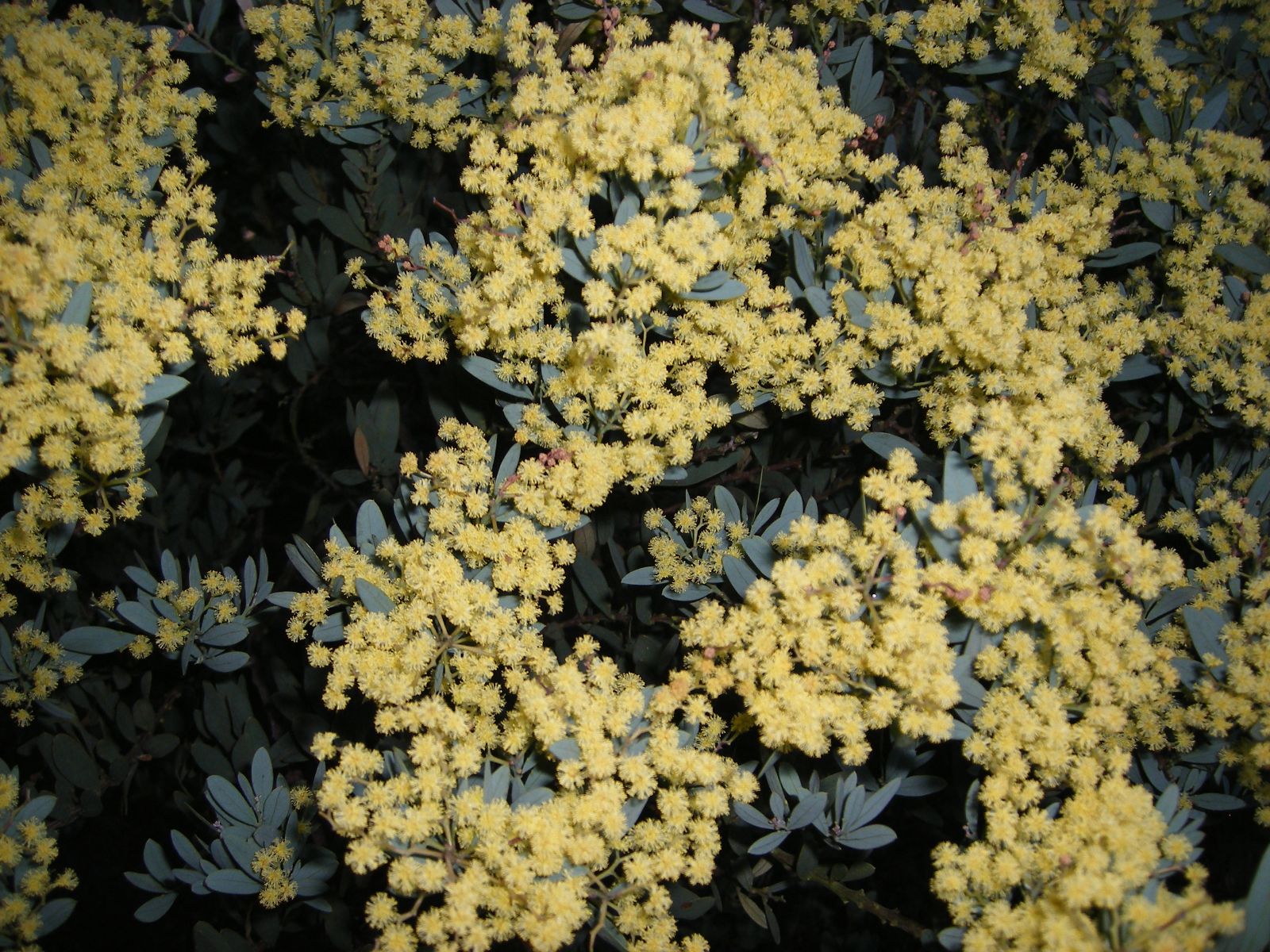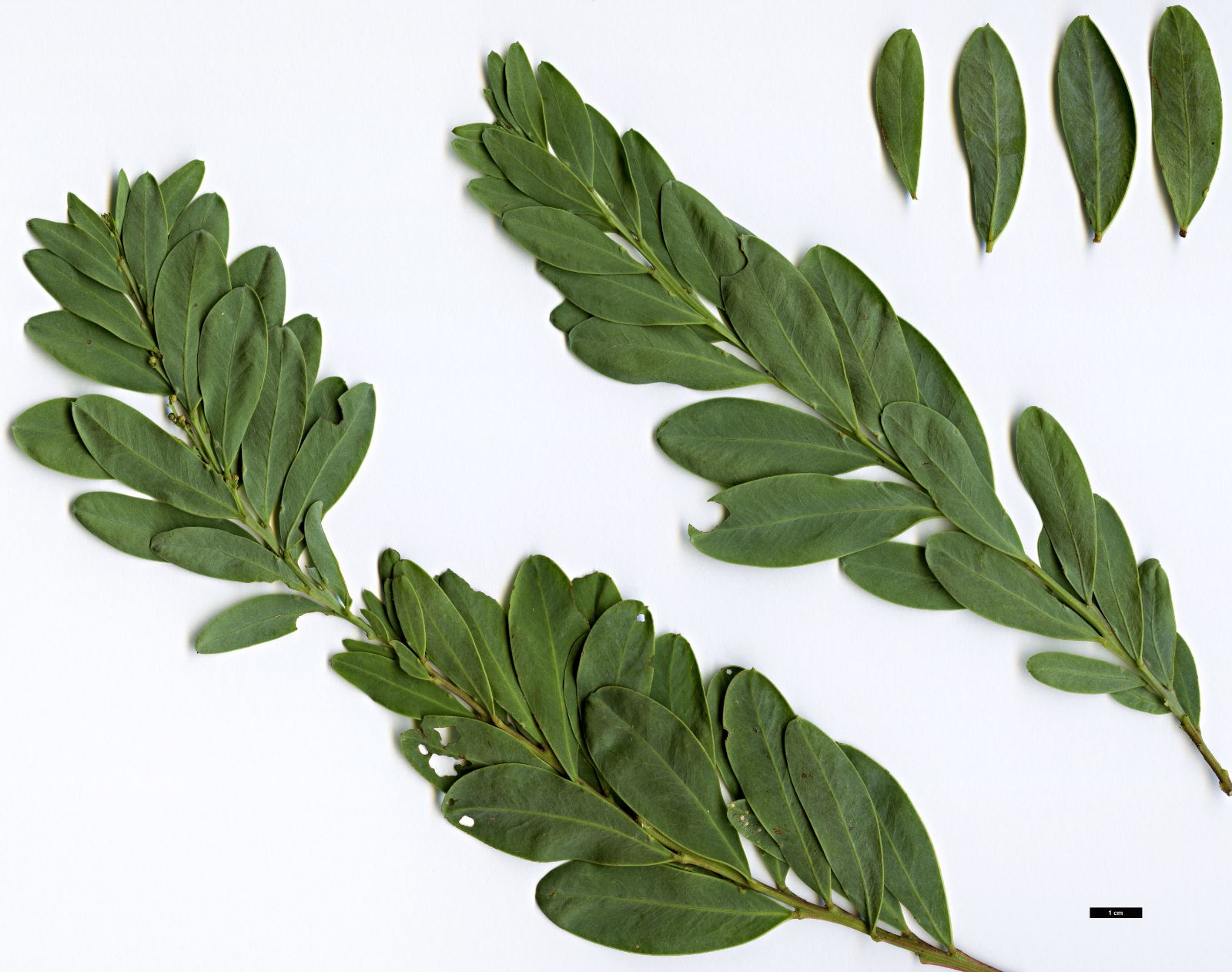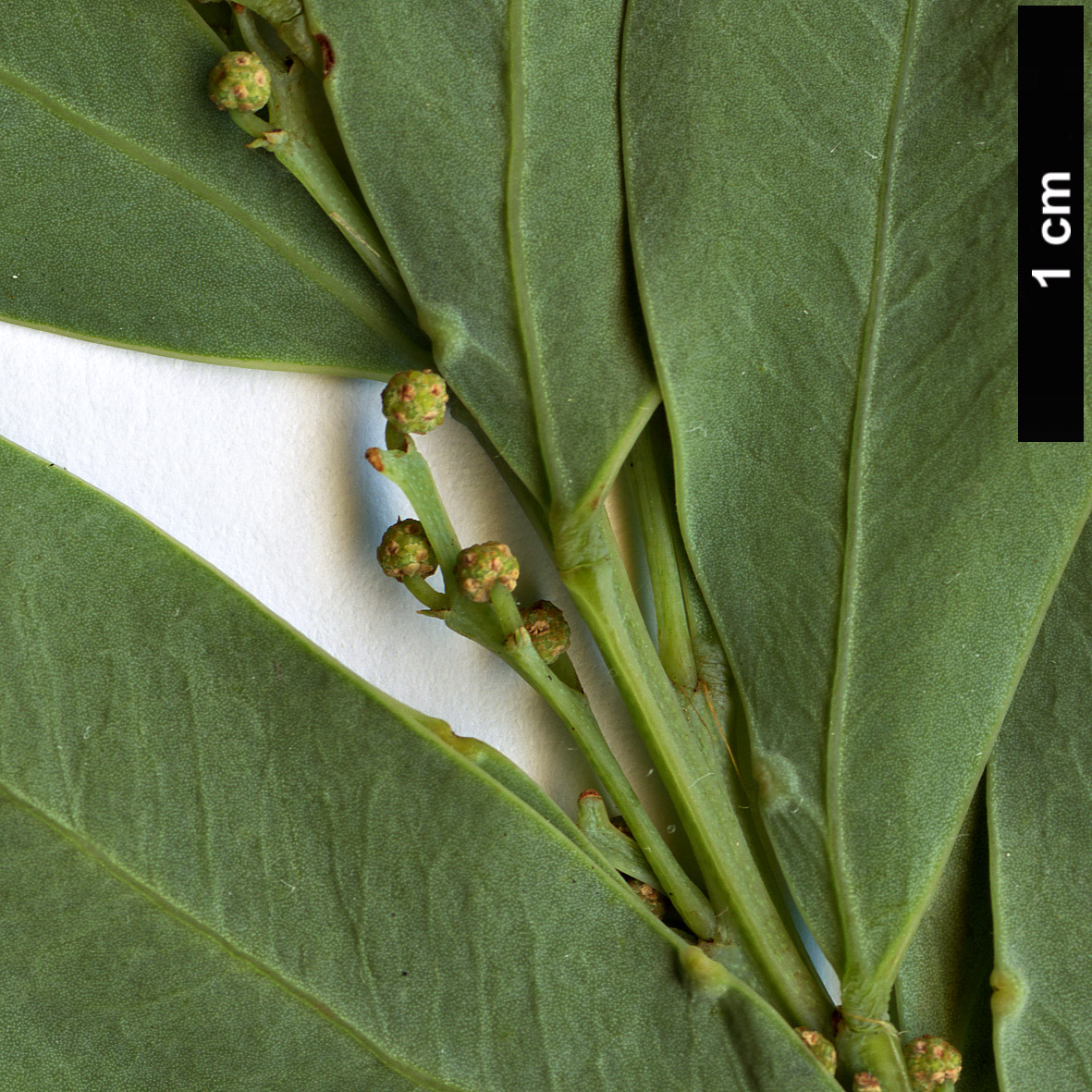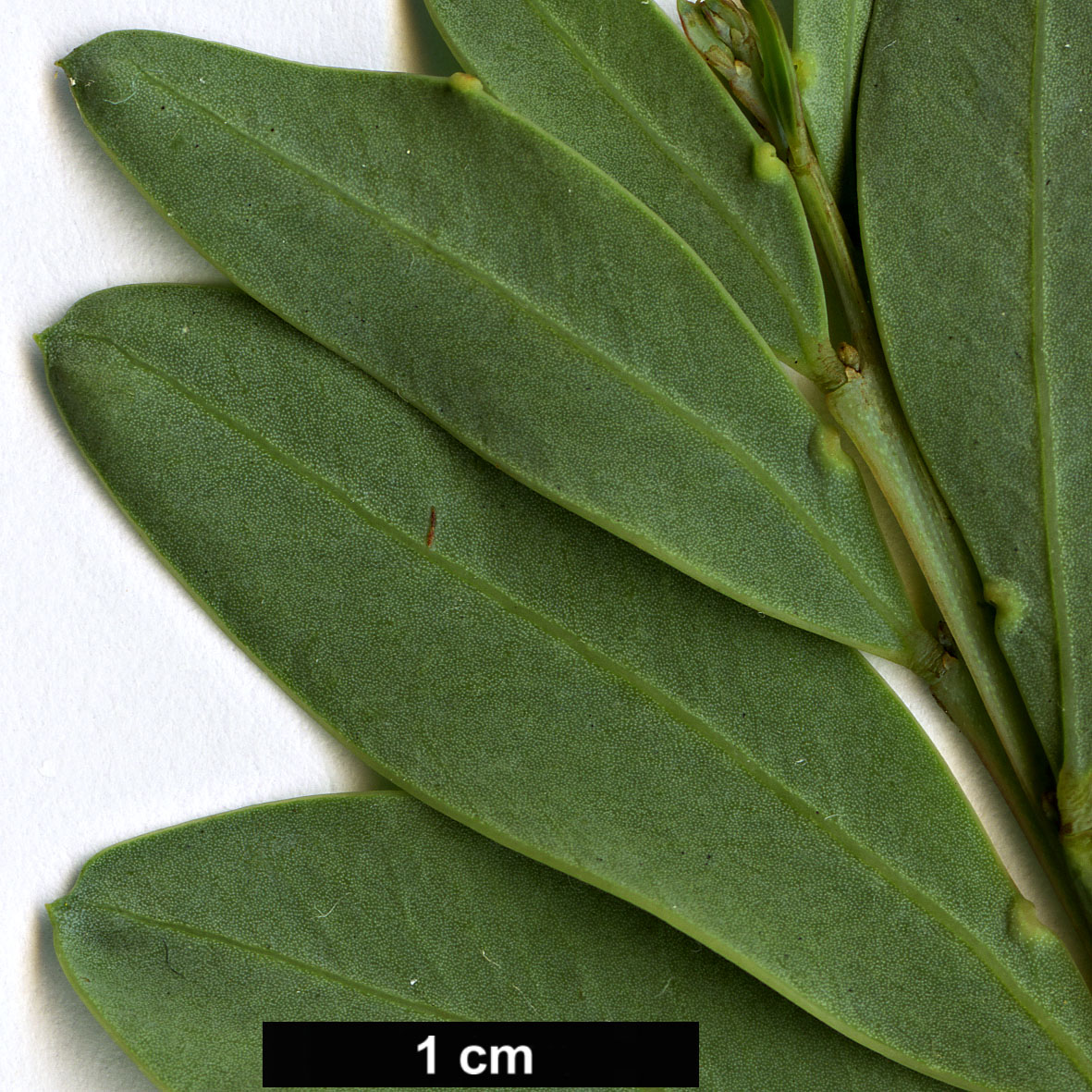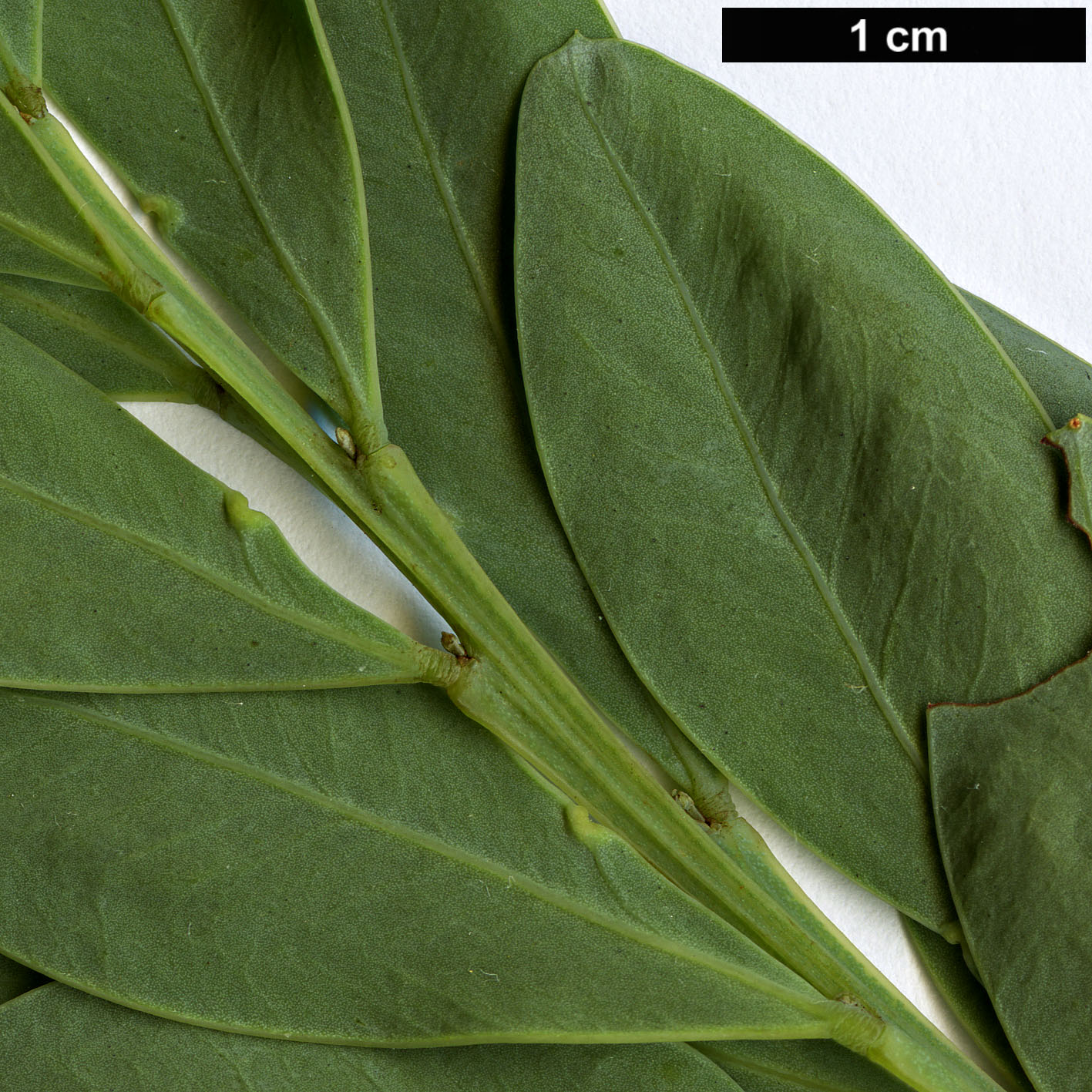Acacia pataczekii
Credits
Article from New Trees by John Grimshaw & Ross Bayton
Recommended citation
'Acacia pataczekii' from the website Trees and Shrubs Online (treesandshrubsonline.
Genus
Common Names
- Pataczek's Wattle
- Wally's Wattle
Shrub or tree to 6 m, freely suckering when disturbed. Branchlets angular to terete, glabrous, dark red and slightly glaucous. Leaves reduced to phyllodes; phyllodes extremely variable, oblong to elliptic to oblanceolate, rarely obovate, 2–6 × 0.8–2 cm, thin and leathery, glabrous, lateral veins obscure, margins entire, apex rounded to acute; phyllodes attached to a stem projection. Inflorescence racemose and axillary, 1.5–10 cm long and flexuous; heads globular with 10–15 lemon-yellow flowers. Flowers densely packed, 5-merous, petals absent, stamens numerous. Legume narrowly oblong, 2.5–4.5 × 0.7–1.1 cm, purplish brown, hard and elastic. Seeds with aril. Flowering in spring. Chapman et al. 2001a, 2001b. Distribution AUSTRALIA: northeast Tasmania. Habitat Understorey tree in eucalypt forests at about 1400 m asl. USDA Hardiness Zone 8. Conservation status Not evaluated. Illustration NT62, NT67.
This Tasmanian endemic is well established in the northern hemisphere, even being produced by Dutch wholesale nurseries and thus easily available in Europe (though less so in the United States). It is grown in several British gardens, but for many years the best-known specimen in the United Kingdom was one of 6 m that grew behind the former Alpine House at Kew, forming a lovely small tree with dark reddish bark and a compact crown of greyish phyllodes, flowering and fruiting freely. Unfortunately this has been lost under the extension of the Jodrell Laboratory. Another fine tree still grows at Kew, near King William’s Temple. It should be possible to grow A. pataczekii throughout the maritime and milder parts of our area, given a well-drained sunny site.

